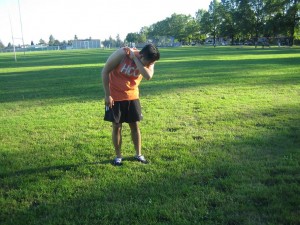Dust mite allergy is an allergic reaction to small bugs living in house dust. It is characterized by sneezing, running nose, symptoms of asthma such as wheezing and breathing difficulties.
https://www.youtube.com/watch?v=8K3MbTEncL4
Dust mites are related to ticks and spiders which cannot be seen by the naked eye. They eat skin cells shed by people and likes warm and humid environments. Upholstered furnitures, carpeting, mattresses and beddings are ideal places for dust mites. The dust mite allergy can range from mild to severe.
Symptoms of dust mite allergy
- Ichy, red and watery eyes
- Sneezing
The dust mite allergy can range from mild to severe. - Runny nose
- Nasal congestion
- Coughing
- Itchiness of the nose, roof of the mouth or throat
- Postnasal drip
- Facial pressure or pain
- Swollen, blue-colored skin under the eyes
- Frequent rubbing of the nose in upward direction
- Chest tightness
- Difficulty breathing
- A whistling or wheezing sound when exhaling
- Difficulty falling asleep due to shortness of breath
Causes
- Dust contains feces and decaying bodies of dust mites and proteins found in dust mite or “debris” causes dust mite allergy.
Treatment
- Take the prescribed antihistamine to relieve itching, sneezing and runny nose. Another alternative is using antihistamine as a nasal spray is also good for the condition.
- Use a neti pot or a squeeze bottle to flush out thickened mucus and irritants from the sinuses. Prepare a saline solution using distilled and sterile water, already boiled and cooled down. In a cup of distilled water that is lukewarm, add 2.5 gm of salt and mix until dissolved. Fill a nasal cleansing pot such as neti pot with the saline solution. Insert the tip into the nostril and squeeze it gently. The solution will drain from the mouth or the other nostril. Repeat the procedure several times every day. Clean properly the neti pot after every use.
- Take an over-the-counter decongestant to minimize swollen tissues found in the nasal passages and makes breathing easier.
- Get an allergy vaccination or immunotherapy.
Tips
- Cover mattresses and pillows using allergen-proof bed covers. They are made of tightly woven fabric that prevents dust mites from colonizing the areas.
- Wash bedding every week using hot water at least 130 degrees F to eliminate dust mites and allergens. If they cannot be washed in hot water, put the items in the dryer for at least 15 minutes with a temperature of 130 degrees F to kill the mites.
- Maintain humidity below 50% inside the house. Use a dehumidifier or an air conditioner to maintain humidity inside the house.
- Vacuum regularly carpeting, upholstered furniture and surface dust using a vacuum cleaner with double-layers of microfilter bag or high-efficiency particulate air filter to lessen emission of dust mites from the cleaner.

